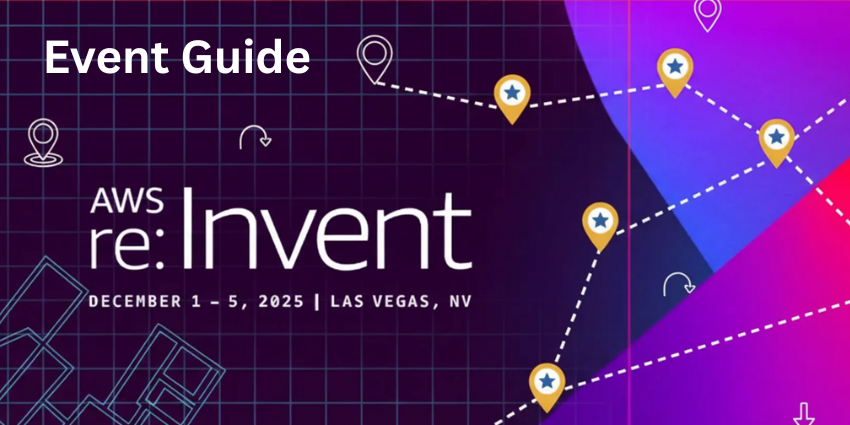Brands are faced with the challenge of interacting with six generations of customers who communicate with their contact centers each day, but this presents opportunities to change how they think about their customer interactions heading into 2026, attendees heard at the Contact Centre Expo at Excel London last week.
Today’s contact centers are interacting with customers that stretch from the Silent Generation all the way to Gen Alpha in a day.
As Garry Gormley, Founder of FAB Solutions, put it, “We’re at a strange impasse.”
There’s the Silents and Boomers who still value voice contact with human agents; Gen X and Millennials who mix digital self-service with human support; Gen Z, who jump between apps and channels; and the emerging Gen Alphas, who are growing up expecting hyper-personalized, predictive experiences.
Put all six generations together, and it’s easy to see why no single communication style or service model can cover everyone.
Managing by Generation Isn’t Just an HR Strategy
There’s an economic case for taking generational differences seriously. Data from the World Economic Forum shows that countries can increase their GDP by 19% over 10 years by managing their workforce based on generational groups, and that extrapolates itself out to customers, noted Katy Forsyth, Managing Director of Red Recruitment.
Every generation wants speed, multichannel and intuitive service, but the defining difference between the generations is that younger consumers want personalization, Forsyth said.
“[Gen Z] want everything addressed to them personally. They want an emotional connection with their service… And then when we get the Alphas coming along, they’re even more hyper-personalized.”
These consumers expect brands to use predictive analysis to make recommendations based on the activity on their phones.
Much of this comes down to economic pressure. Gen Z’s spending habits are different because their financial realities are different. Forsyth highlighted that in the UK, “it costs Gen Z six times their salary to get a house deposit. For an Xer in 1995, it was a third of one year’s salary.”
It’s partly because of that smaller buying power that when Gen Z consumers do choose to spend, they want meaning behind the transaction. “The personalization is super important,” Forsyth said, noting that on Black Friday, Gen Z consumers will spend an average of £255 on purchases, which is almost double the £155 that Gen Xers are expected to spend.
That makes Gen Z customers an important demographic for brands to address and they need to understand how to appeal to them. Younger consumers are the mostly likely to use GenAI and AI assistants in their holiday shopping, with Gen Z accounting for two-thirds of shoppers turning to ChatGPT for gift inspiration, according to research from Bread Financial.
Despite narratives around younger generations’ aversion to picking up the phone, Forsyth warned against oversimplification when it comes to providing voice channels:
“Even though they might want to self-serve, you’ll be surprised… as soon as it gets uncomfortable, they want voice. Do not believe the headlines.”
Data shows that when dealing with emotional issues Gen Z wants to speak to a service agent, indicating that companies need to tread carefully and avoid dealing with customers on the basis of assumptions.
Matching Service to the Customer You Actually Serve
For contact centers, getting to grips with practical ways to stay authentic as they juggle all the different ways generations communicate is not an easy task. Beyond managing multiple channels, it’s about making sure every interaction feels honest and human, whether a customer reaches out on the phone, chat or through social.
That means giving contact center agents the freedom and tools to adjust their tone to the customer, using technology to support real connection.
While older generations may still prefer a softened message, younger generations will not tolerate spin. Forsyth said of Gen Z:
“They do not trust you as businesses, whether you’re employing them or selling to them… They will take bad news… but you need to tell them the truth. Do not flower it up… Forget the good news, just go for the jugular, and they’ll respect you a whole lot more. Tell them it’s expensive, but why?”
Trust was a recurring theme during the discussion, as well as the ways in which it spans across generations.
Marco Ndrecaj, Director of Customer Experience Management, Shared Services Connected, said the biggest threat to customer experience isn’t channel fragmentation, it’s eroding trust:
“We need to make sure that we are demonstrating trust in the right way, through communicating honestly and openly about the engagements that we have, either through a bot, or through an AI agent, or through a live person and being really clear on the distinction between those and servicing that to the right people.”
Ndrecaj highlighted a sentiment from one of his contact center advisors: “Customers are being overwhelmed with information… technology on its own doesn’t build trust. People do… What matters is how we use technology to enhance the customer connection.”
The balance between human empathy and AI capability is the foundation on which to build credibility, increasing trust rather than eroding it.
“Humans bring empathy and judgment, while AI provides skill and insight. And when brands get this balance right, that’s when the magic happens.”
Brands are challenged with producing content to appeal to the TikTok generation, which gravitates toward fast-paced, video-led storytelling, while remaining relevant to older audiences that engage in different ways. “How do we think about how we adapt and create that video first experience for the consumers of tomorrow?” Ndrecaj said.
But Ndrecaj also urged brands not to confuse channels with meaning: “I don’t think it’s the actual medium. It’s more around how you make them feel. Gen Z and Gen Alpha think very differently. It’s not about video content or… collecting points. It’s about them feeling a sense of purpose. It’s about organizations that actually have shared values.”
Ndrecaj pointed to brands like Nike and Lego as examples, noting: “They actually invite their customers to co-create products. And that is a feeling that you can’t buy through TikTok or Instagram.” Forsyth, too, cited Nike as brand that is connecting well with customer service for Gen Alpha.
Brands also need to strike a balance between acknowledging the differences between generations and making assumptions about what customers want.
Beyond Stereotypes: Reading the Real Customer Need
Sandrea Morgan, Head of Customer Support at Adanola, warned against treating generational traits as blanket truths. “It depends on where you are as a business and what type of customer you’re interacting with…. because what a customer expects depends on the experience they want to have. What am I trying to purchase. Is it something for the home? Is it something for you personally? That does change what you expect no matter what age you are.”
Morgan contrasted the customer expectations of two different types of businesses.
“In my current role [with a] younger Gen Z customer, the majority of what they want is [for interactions] to be simple, quick, on brand, but pretty efficient and professional. I was in a role a year ago, [with] a slightly older customer. The product was a bit more expensive. There was more of a luxury feel to it. What they wanted from us was very, very different, and the tone of voice that the advisor had was very, very different.”
Understanding the customer makes it easier for brands to move beyond generic customer service design and give their contact center employees the tools and training they need to connect with customers in the most appropriate way for the service they expect.
“Sometimes that’s a piece of technology that you can give them, and sometimes it’s about the training that you give them to be the best in their job every day,” Morgan added, stressing the importance of aligning agents’ skills to the customers they serve.
And to complicate things even further, figuring out what customers want isn’t straightforward, because while they might say they make purchases based on their values, their actual choices can tell a different story.
For Gen Z, for example, their values matter, but they are also under strain from the limits to spending power. As Forsyth pointed out:
“Their values are really critical, but we are in a cost-of-living crisis that is affecting the Zs, and they’re having their values pushed as a result of that.”
Businesses need to be prepared for that to change over the next three to five years and make sustainability more cost-effective to deliver. “Then we keep every generation happy, but particularly the Alphas, who will just be hitting with the spending power,” Forsyth said, as they transition to becoming a larger share of retail spend.
Ultimately, serving customers spanning six generations is about listening closely and building the kind of service that can flex as customers’ needs shift.







